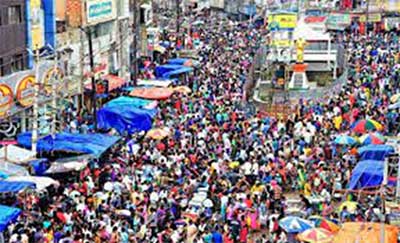Date: 17/11/2022
Relevance: GS-3: Population, Migration and Associated Issues and remedies.
Key Phrases: World Population Prospects 2022, United Nations Department of Economic and Social Affairs, National Family Health Survey, Total Fertility Rate, Global Balance of power, Migration, Ethnic Tensions, Host Culture, Geographic and Generational Transformations, Power-sharing Arrangement.
Context:
- As per the World Population Prospects 2022, released by the United Nations Department of Economic and Social Affairs, Population Division, the global population is projected to reach 8 billion on 15 November 2022.
Key Highlights:
- In 2021, the fifth edition of India’s National Family Health Survey reported that for the first time in the country’s history, the Total Fertility Rate (TFR) had hit 2.0 or below the replacement rate of 2.1.
Issues with Growing Population:
- Global Balance of power
- The coming century belongs to Asia and Africa if strength lies in numbers.
- The UN estimates that the share of Europe and North America in the global population has declined to 14% today from 31% in 1900 and is expected to go below 12% by 2050.
- China, which formed 25% of the world population in 1900, will decline to 14% by 2050.
- The global population share of undivided India was 17%, while the combined population of India, Pakistan and Bangladesh is now 23%. India alone will form 17% of the global population in 2050.
- Changing Age Distribution
- The changing age distribution complicates adjusting to this changing geographical centre of population gravity.
- Declining fertility in the West has led to the rapid ageing of the population
- Migration and Ethnic Tensions
- Immigration remains the only option to reduce the dependency ratio imposed by the rising proportion of the elderly and declining fertility among the native-born population.
- Already immigrants form a large proportion of the people in many developed countries.
- While this gives rise to tremendous ethnic tensions, it also increases the power of minorities in these host countries.
- Differential Population Growth
- Differential population growth has led to a decline in the share of the Indian population in the southern States from 26% in 1951 to 21% in 2011.
- Labour force consequences of this declining population share are further aggravated by population ageing.
- Host Cultures’ Challenge
- With a growing influx of culturally diverse migrants, host cultures find themselves between a rock and a hard place.
World Population Prospects 2022
- About
- The United Nations Department of Economic and Social Affairs, Population Division, released the World Population Prospects 2022, an estimate of likely trends in the global population.
- Major Outcomes
- The global population, which stood at almost 7.9 billion in 2021, is projected to reach 8 billion on November 15, 2022.
- The report underlines that India is expected to surpass China as the world’s most populous country in 2023.
- The projections suggest that the world’s population could grow to around 8.5 billion in 2030 and 9.7 billion in 2050, before reaching a peak of around 10.4 billion people during the 2080s and is expected to remain at that level until 2100.
- The population of India is expected to peak at 1.7 billion sometime in 2064.
- Life expectancy at birth for women exceeded that for men by 5.4 years globally, with female and male life expectancies standing at 73.8 and 68.4, respectively.
- In 2021, the average fertility—or the number of children born to a woman in her reproductive lifetime — of the world’s population stood at 2.3 births per woman, having fallen from about five births per woman in 1950.
- Global fertility is projected to decline further to 2.1 births per woman by 2050
- More than half of the projected increase in global population up to 2050 will be concentrated in just eight countries including India.
- The 46 least developed countries (LDCs) are among the world’s fastest-growing and several are projected to double in population between 2022 and 2050.
Conclusion:
- We need to reflect on the implications of a world population of 8 billion and learn to address the changing geographic and generational transformations if we are to navigate our demographic destiny successfully.
Source - The Hindu
Mains Question:
- Q. What are the challenges associated with the growing population and changing population pattern? Suggest measures to address these issues. (250 Words)








